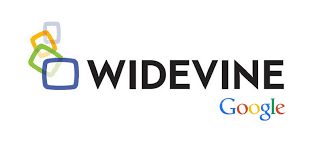Today, a post about Digital Rights Management. I am not going to bore you with the pros and cons of restricting your freedom, but I do want to point to a meaningful event which happened this week.
Before I continue, I want you to fully realize that with Slackware Linux, your rights are not taken away. You are free to use – or not use – technologies that allow you to watch “protected” content like Netflix videos. Our browsers will work just as well if you choose not to use DRM technologies. The libraries which implement the DRM layer are separate from the Slackware packages containing the browsers (Firefox, Chromium) and are not distributed with the OS. It is up to you to add DRM extensions if you need them. You are and remain in control of your OS.
With that out of the way, what happened?
This week, the World Wide Web Consortium (W3C) has finally approved the Encrypted Media Extensions (EME) as part of the HTML5 standard. Objections from the Electronic Frontier Foundation, Free Software Foundation and other digital freedom advocates have not been honored. But that does not necessarily mean it’s a bad thing. EME is a standard to implement DRM, but it is not a DRM solution itself. EME allows companies that built their business model around the commercial distribution of protected media content to create rich applications that run in your browser, based on international standards.
Digital Rights Management is not new and it is not going away either. However: it is in need of standardizing to improve the current status-quo. Because there are already several de-facto standards to stream protected content to your browser: Flash, Silverlight, to name the two that have been most widely used in the past years. Both these technologies are dying or dead already. New technologies that build on HTML5 are already becoming unofficial standards; think of Widevine, which is a DRM solution from Google. Not just browser plugins like the ones I mentioned, but also applications can implement DRM when they allow you to watch or listen to multimedia without the option to make unrestricted local copies. Locally stored content will be encrypted and can only be played back using the original app. Lots of those on Android for instance.
DRM solutions are proprietary. Their code is not free and the libraries are distributed as binary-only. There’s a logic to that of course. Think what you will, but there are both providers and consumers that embrace them. What is more important, is that there is wisdom in embedding these technologies in Web standards. We should not encourage companies to pollute our computers with incompatible and non-interoperable solutions. So yes, I am glad that EME is a W3C standard finally. Let the Web remain viable, allowing maximum flexibility and compatibility.

I mentioned Widevine in the text, and I have something new to tell about that too.
My package repository contains the chromium-widevine-plugin. It is a add-on package to my chromium browser package that allows you (among others) to watch Netflix video content in your Chromium browser. In the past I have always used the Google Chrome RPM’s to extract the ‘libwidevinecdm.so‘ library and make a Slackware package out of it. Google stopped distributing 32bit versions of the Chrome browser after version 48 so those of you on 32bit Slackware and using my Chromium package, were stuck with an old version of the Widevine CDM library and no way of knowing how long this library would remain compatible with newer Chromium sources.
But Mozilla have since then extended Firefox’ capabilities, so that it too is now able to use Widevine’s Content Decryption Module. In Firefox, this DRM capability was implemented in such a way that by default, the browser is completely DRM-free. You (the enduser) first have to explicitly enable DRM in the browser’s settings after which Firefox will download the Widevine CDM from an Internet URL. And since Firefox comes in 32bit as well as 64bit variants, I was thinking “where do they download these Widevine libraries and are they useable in Chromium as well?”
So I set out to find the Firefox download location for Widevine CDM libraries, found them, retrieved them and tested the libraries in 32bit and 64bit Chromium. Lo and behold…. this worked!
I have now rewritten my SlackBuild script for the chromium-widevine-plugin package to use this alternate download location. And since I no longer have to extract the library from a Chrome RPM, I have also changed the package version numbering. The package version no longer reflects the Chrome release, but now it is actually reflecting the internal version of the Widevine CDM library.
Have fun watching Netflix! While I am at it, I recommend The Expanse, or perhaps Helix. If you’re not so much into Sci-Fi (or have already seen those series) and want to know more about our basic foods, check out Cooked.
I was watching “Bloodline,” but the 2nd season wasn’t as good as the first. “Orphan Black” is pretty good, as well. 🙂
Thanks for the plugin 🙂
And last weekend, wanting a break from sci-fi, I finally started to watch Elementary.
But I’ll save these two for later 🙂
Thank you for the explanation, Eric. Much appreciated.
Learn something today. Thanks!
the 1st season of Helix is great 🙂
the 2nd season is cr*p 🙁